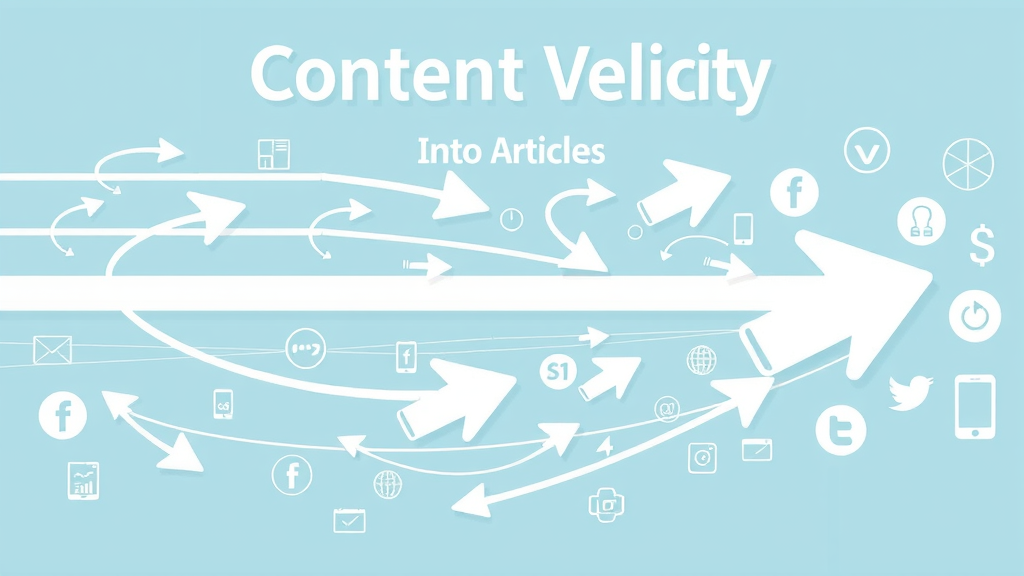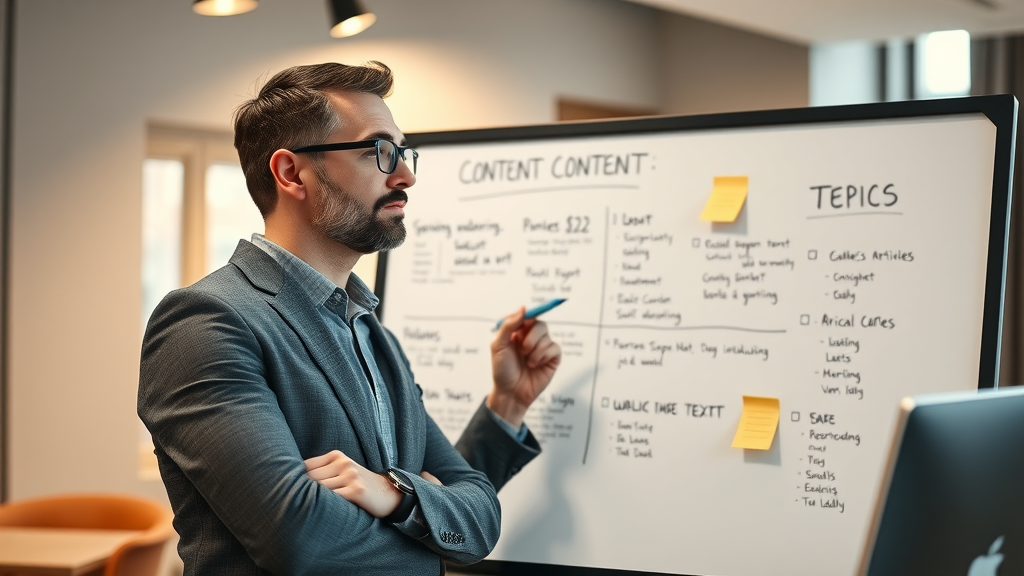Did you know? Many businesses investing thousands in paid ads lose 100% of their web visibility overnight the instant spending stops. In contrast, brands that embrace content velocity establish digital assets that earn search visibility — and drive business growth — for years to come. If you’ve ever felt trapped on the paid ads treadmill or wondered why your SEO efforts seem to lag in results, this article will radically change how you view online growth. Let’s uncover the real differences between renting short-term attention and owning permanent authority in your market.
Opening Insights: Surprising Facts About Content Velocity and Positioning
It’s no secret that most small and mid-sized businesses pour significant dollars into paid ad campaigns each month—hoping for a steady stream of leads. Yet, the moment those payments stop, web visibility can collapse to zero. Research shows paid channels offer fleeting exposure while organic search positions — earned through high content velocity — can persist for months or years, attracting leads passively and compounding your marketing return. Strikingly, high content velocity not only increases your content library but also positions your brand as an industry authority. This difference in longevity, visibility, and ROI makes understanding content velocity essential for anyone seeking to build lasting online success rather than chase short-lived clicks.

"Did you know that businesses investing heavily in paid ads often lose 100% of their web visibility the moment they stop paying? In contrast, high content velocity can secure permanent search visibility for years."
John Juretich-Digital Media Marketing
What You'll Learn About Content Velocity and Positioning
The difference between paid temporary positioning and organic permanent positioning
How content velocity drives sustainable business growth
Why content strategy matters more than ever for ROI
Key steps to implement high content velocity for your digital content
How to balance paid advertising and content marketing for long-term results
Real-world scenarios illustrating content velocity advantages
Defining Content Velocity: Key Concepts and Terminology
Understanding content velocity can transform how you approach digital marketing. Whether you’re a business owner, marketing manager, or an experienced digital content strategist, recognizing how quickly you publish content across multiple channels — and the business impact — is crucial for modern SEO. Below, we answer the most searched questions to clarify what content velocity means and why it’s the new standard for sustainable online authority.

What Does Content Velocity Mean? (People Also Ask)
Answer: Content velocity measures how frequently a brand creates content and distributes it across digital channels, directly influencing online visibility and authority.
When you create high content velocity and distribute it across your blog, social media, and other digital content channels, you build a compounding web of valuable digital assets. This pace is critical: the more frequently you publish quality content tailored to your target audience, the more opportunities you give search engines to index and rank your site. High content velocity improves your chances of ranking for a broader range of queries, establishing your business as a reliable resource. As content accumulates, it amplifies your authority in your niche, making it harder for competitors to overtake you in search results.
What Do You Mean by Data Velocity? (People Also Ask)
Answer: Data velocity refers to the speed at which new data is generated and processed. In content marketing, high content velocity means faster information flow and quicker audience engagement.
In the realm of content marketing, data velocity goes hand-in-hand with how swiftly information is disseminated to your target audience. This directly affects your business’s ability to stay ahead of trends, respond to marketplace needs, and engage users before competitors do. With rapid content production and agile content marketing strategies, you’re not just keeping up—you’re seizing the initiative, positioning your brand as proactive, informed, and relevant.
What is Content Speed? (People Also Ask)
Answer: Content speed is often used interchangeably with content velocity, describing how quickly brands can produce and publish quality content to reach their target audience.
Content speed underscores your brand's agility in high content production and the ability to seize fleeting opportunities in your industry. By quickly responding to trending topics with quality content, you boost both visibility and engagement. While “content speed” highlights the quick turnaround for pieces of content, maintaining consistent high content velocity ensures long-term traction, authority, and a robust presence in search engines.
What is the Definition of Velocity? (People Also Ask)
Answer: Velocity, in a marketing context, refers to how quickly actions are completed—in this case, the rate of content production and deployment.
Applied to content strategy, velocity reflects not just the amount of content produced, but the frequency with which it's published. Brands that keep a steady pace quickly build a substantial digital content library, boosting their organic reach. Unlike a burst of effort followed by long gaps, high content velocity signals to search engines and users alike that your brand is actively contributing fresh, quality content, increasing both trust and long-term web visibility.
For a deeper dive into maximizing your paid campaigns and understanding how to strategically balance them with organic efforts, you might find it helpful to explore this comprehensive guide to paid advertising strategies and ROI-boosting tips. It offers actionable insights that complement your content velocity approach and help you make informed decisions about your marketing mix.
Paid Content Positioning: The Rental Model Explained
Relying solely on paid ads is like renting an apartment for your business online. You get visibility and clicks during your active campaign, but once the payments stop, you immediately lose the space you’ve temporarily occupied. Let’s explore why this model leads to short-lived results, rising costs, and why, despite years of investment, you own nothing of lasting value.
The Real Cost of Paid Ads: Understanding Temporary Positioning
Paid ads purchase visibility temporarily in search, social, and display networks.
Visibility ceases immediately after budget is depleted.
Rising ad costs drive lower ROI over time.

"Paying for ads is like renting a billboard on a busy street: stop paying, and your business disappears from view overnight."
John Juretich- Digital Media Marketing
Even the most creative campaign will only remain visible for the period of time you’re paying for placement. Paid ads cannot build enduring recognition or site authority. As digital marketing evolves, ad costs continue to increase while consumer attention spans drop, leading to higher spending with diminishing returns. This makes relying solely on paid visibility a risky short-term strategy.
Authority and Trust: Why Paid Strategies Cannot Build Lasting Reputation
Paid placements offer only short-term visibility, not long-term trust.
No lasting impact on brand credibility after campaigns end.
Lack of cumulative authority in Google search results.
Trust and authority are core factors in building a recognized, lasting business. While ads can drive short-term awareness, they do not accumulate reputation in the eyes of consumers or search engines. Paid campaigns lack the compounding effect found in organic content velocity — the more high content you publish and the higher your content quality, the greater the long-term impact on search engine rankings and brand equity.
Organic Content Velocity: The Path to Permanent Positioning
Think of organic content velocity as the digital equivalent of owning property. Every blog post, social media update, or piece of digital content you publish adds to your brand’s permanent assets, securing a spot in search engines that can’t be taken away each time your marketing spend pauses. Below is why investing in organic content velocity is like owning prime real estate online.
Why Organic Content Velocity is Like Owning Property
Each published article adds to your digital content library.
Builds permanent authority and search visibility.
Harder for competitors to overtake established sites with high content velocity.
"Organic content velocity is the digital equivalent of owning prime real estate—you control and benefit from it in perpetuity." John Juretich- Digital Media Marketing

With each high content velocity and quality content piece, you move beyond mere visibility and towards lasting authority. This library of digital assets works for you day and night: attracting leads, inbound links, and referrals even during periods of time when you’re not actively publishing. The compounding effect means every piece of content you produce further cements your positioning, increases your trustworthiness, and creates barriers for competitors aiming to catch up.
The Compounding Effect: High Content Velocity and Authority Growth
More articles published equals more ranking opportunities.
Old content continues to attract traffic and leads over time.
Authority compounds, generating stronger performance in future campaigns.
Unlike paid ads, which lose effectiveness the moment your campaign ends, high content velocity means old articles, blog posts, and media posts continue to drive engagement and revenue. The compounding authority from consistently producing quality content increases the relevance and strength of your digital content domain in search engines. Over months and years, this foundational growth translates into more cost-efficient campaigns, increased organic referrals, and persistent brand credibility.
Comparing Paid Content and Organic Content Velocity: Rental vs. Ownership
Understanding the distinction between renting space with paid ads versus owning assets through organic content velocity is vital for any digital marketing strategy. The table below highlights the key differences, helping business owners and marketing managers make informed choices for long-term growth.
Feature |
Paid Ads (Rental) |
Organic Content Velocity (Ownership) |
|---|---|---|
Longevity |
Temporary: Only lasts while paying |
Permanent: Content accumulates and compounds |
Return on Investment (ROI) |
Immediate, then flatlines after budget runs out |
Delayed ramp-up, then ongoing visibility and leads |
Authority |
Minimal – does not build search engine trust |
Grows with each published piece of digital content |
Brand Equity |
No lasting impact |
Accumulates over time as content library grows |
Cost Trend |
Rising (bidding wars, higher ad prices) |
Stable (investment builds assets) |

The compounding nature of organic content velocity simply cannot be replicated by paid campaigns. Over time, ownership beats renting in both cost efficiency and brand equity.
Case Study: $3,000/mo Spent on Ads Versus Content Velocity Investment
To drive home the difference between paid visibility and high content velocity investments, let’s contrast two real-world scenarios facing many local clinics, service businesses, and professional practices.
Scenario 1: Paying for Ad Space Each Month
Immediate visibility when ads run
Leads stop the moment spend stops
No content assets built
A clinic invests $3,000 per month in Google and Facebook ads. For that period of time, leads and web traffic flow in. But if budget constraints or market conditions pause spending, digital presence vanishes overnight. After years, the clinic owns no digital property—no articles, no ongoing organic traffic, no search engine authority. It’s a never-ending cycle of “pay to play,” with no cumulative benefit or brand legacy.
Scenario 2: Investing in High Content Velocity for a Year
144 articles published in 12 months
Exponential backlink and organic reach growth
Leads continue even during publishing pauses
Compare this to a clinic that dedicates the same $3,000/month budget to a targeted content strategy: hiring writers, publishing 12 expertly researched articles per month. After one year, the business has created a robust digital content library of 144 permanent blog posts and rich media posts. This drives ongoing leads, earns backlinks, and cements your authority through a strategic content strategy. Even if production pauses, those assets continue to generate organic leads, protect against competitors, and reduce future ad dependency.
Quality Content and Content Strategy: Building for the Long Term
The foundation of lasting online growth is not just content velocity—it’s creating quality content through a focused content strategy that addresses the needs of your target audience. A well-defined content strategy ensures every piece—whether a blog post or a social media update—delivers real value, builds trust, and supports your broader business goals.
Crafting Quality Content for Your Target Audience
Focus on user intent and audience needs
Invest in digital content that answers real questions
Leverage content marketing to build expertise and brand loyalty

Effective content creation means understanding your audience’s unique pain points and delivering comprehensive, relevant content that guides them along the customer journey. This drives higher engagement, supports all stages of the buying cycle, and creates advocates who trust your message. High content velocity amplifies this effect by broadening your digital footprint faster and more consistently.
Content Production: Balancing Content Marketing with Paid Ads
Integrated content strategy: using both paid and organic channels
Use ads for quick wins, but prioritize high content velocity for sustainable growth
Measure high content velocity’s impact on customer acquisition costs
While paid ads can give your newest blog post or webinar a quick boost, only high content velocity builds the deep, lasting presence that search engines reward. Smart marketers use both: leveraging paid for time-sensitive promotions and organic content marketing for sustained authority. By reducing reliance on paid channels over time, businesses drive down customer acquisition costs and build lasting value.
Watch: Animated breakdown of temporary vs. permanent positioning, with real-world scenarios and actionable tips to increase your content velocity.
Authority and Business Equity: Content Velocity as a Strategic Asset
"Content Velocity isn't just a marketing tactic—it’s an asset that increases your business’s value and online presence for the long run."
John Juretich- Digital Media Marketing
When you invest in content velocity, you are building more than short-term traffic. You’re constructing real business equity—search engines view your growing library of high-quality, relevant content as a sign of expertise, improving rankings and solidifying trust among your target audience. This deepens over time, future-proofing your brand against trends, changing algorithms, or rising ad costs.
How Content Velocity Future-Proofs Your Business
Organic visibility remains despite advertising marketplace shifts
High content velocity boosts trust and referral value
Content becomes a compounding business asset

Business equity isn’t just for the balance sheet. Compared to ephemeral paid campaigns, your evergreen digital content library becomes a differentiator—powering recognition, SEO, and conversion no matter what happens with competitors, algorithms, or ad channels. Just as physical property can appreciate, so too can your investment in content creation and velocity.
Key Takeaways: Content Velocity for Sustainable Business Growth
Don't rent your results—own your space via high content velocity.
Investing in content velocity pays greater dividends over time.
Mix paid and organic for a smart, long-term strategy.
By embracing content velocity, you empower your business to stay ahead of competitors, reduce dependence on paid visibility, and build a brand presence that lasts for years—not just a period of time. The strongest brands blend sprints (ads) with marathons (content velocity), but the ultimate goal is to own your digital space.
Frequently Asked Questions (FAQs) about Content Velocity
How quickly can I see results from content velocity?
Expect to see momentum build within 30–90 days after consistent publishing begins. Unlike ads, which have instant impact, content velocity compounds and accelerates over time, delivering leads and authority months—and even years—down the road.Why is high content velocity better for long-term ROI?
High content velocity builds permanent digital assets that generate free inbound leads, organic search visibility, and brand authority. As the amount of content grows, so does your online footprint, making each dollar exponentially more valuable than paid ads alone.How do I measure the impact of my content velocity efforts?
Track organic rankings, monthly unique visitors, referring domains, and lead generation over several periods of time. Use analytics to tie new content creation to increases in these KPIs, and compare acquisition costs to paid channels.Can smaller businesses compete with high content velocity?
Absolutely. Even small teams can outperform larger competitors by focusing on hyper-relevant, quality content that addresses specific niche needs. Consistency is key—regular publishing compounds your results over time.How should I allocate budget between paid ads and content velocity?
Start with a hybrid approach: use paid ads for immediate needs or product launches, but gradually shift budget into content strategy and production to build a self-sustaining growth engine for the long term.
Conclusion: Choosing the Right Path to Lasting Visibility

Final Thoughts: Compounding Success Through High Content Velocity
"The strongest brands use paid advertising to accelerate, but you win the marathon by embracing content velocity."
John Juretich-Digital Media Marketing
Leverage content velocity to build a resilient, ever-growing digital presence. Don’t just rent your space online—own it, and reap the rewards for years to come.
If you’re ready to take your digital marketing to the next level, consider how integrating diverse content formats can further amplify your results. Video, for example, is rapidly becoming a cornerstone of effective content strategies, driving engagement and boosting visibility across platforms. To discover why video is essential in modern marketing and how you can harness its power alongside your content velocity efforts, explore this in-depth resource on the role of video in marketing. By combining high-velocity publishing with compelling video content, you’ll position your brand for even greater authority, reach, and long-term growth.
 Add Row
Add Row  Add
Add 




Write A Comment